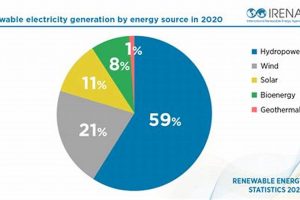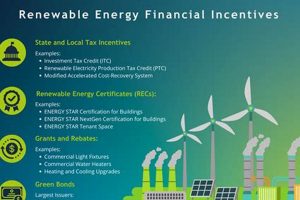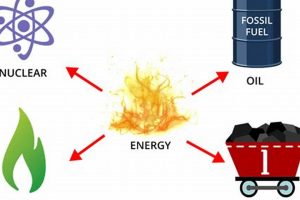
Intermittency, the fluctuating nature of power generation from sources like solar and wind, poses a significant obstacle to the widespread adoption of renewable energy. For example, solar power generation peaks during daylight... Read more »

Renewable energy resources offer several advantages related to sustainability and environmental responsibility. Shifting away from fossil fuels and towards sources like solar, wind, and hydro power yields positive outcomes for the planet... Read more »

Entering the renewable energy sector involves diverse pathways, encompassing technical, business, and policy-related roles. For example, an individual might pursue an engineering degree to design wind turbines, a business degree to manage... Read more »

Organizations involved in harnessing power from sustainable sources such as solar, wind, and hydro, and headquartered within the country, constitute the focus. These entities play a critical role in the nation’s energy... Read more »

Finite resources, such as fossil fuels (coal, oil, and natural gas) and nuclear fuels (uranium), are formed over geological timescales and are depleted faster than they can be replenished. For example, coal... Read more »

The International Renewable Energy Agency (IRENA) compiles and disseminates comprehensive data on renewable power generation, capacity, investment, and related indicators. This data encompasses various renewable energy technologies, including solar, wind, hydro, bioenergy,... Read more »

Financial support provided by public authorities to stimulate the development and deployment of technologies like solar, wind, hydro, geothermal, and biomass power plays a crucial role in the global energy transition. This... Read more »

The pursuit of sustainable power generation in the nations bordering the Arabian Gulf represents a significant shift in energy strategy. These nations, traditionally reliant on fossil fuels, are increasingly investing in sources... Read more »

Conventional power generation relies heavily on finite sources that cannot be replenished at the rate they are consumed. These sources, formed over millions of years, include fossil fuels and nuclear materials. Coal,... Read more »

High-performance computing powered by sustainable sources like solar, wind, hydro, or geothermal energy offers a path towards environmentally responsible technological advancement. For instance, a data center utilizing wind power to run its... Read more »


